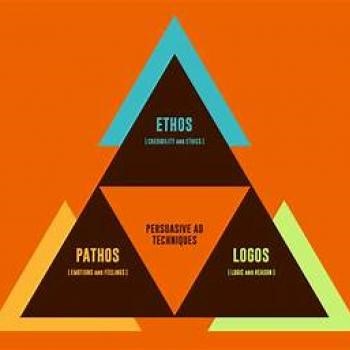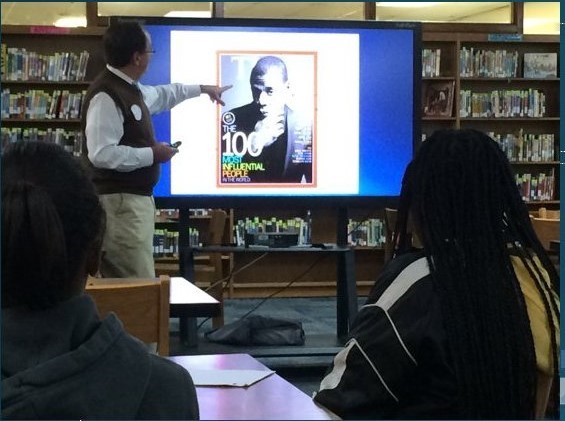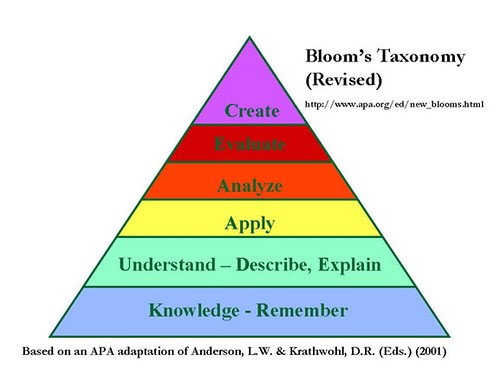Students As Media Evaluators (blogpost)
Students As Media Evaluators (SAME): What Does it Mean to “Evaluate” a Media Message? by Frank W. Baker
In my media literacy blogposts, I have been writing about how popular culture (movies, TV, film, magazines, etc.) as well as current and historic events (pandemic, civil rights, etc.) can be used by teacher/educators to meet teaching standards and help students better comprehend media literacy.
Our students, the media generation, often glued to their mobile devices, are exposed to countless media messages every hour—everyone it seems wants their attention.
With disinformation, fake news and the like exploding on social media, evaluating media messages becomes one of the most important and relevant 21st century skills. (According to Common Sense Media’s 2017 report, News and America’s Kids: How Young People Perceive and Are Impacted by the News, less than half of kids agree that they know how to distinguish fake news stories from real ones.)
Are your students media evaluators? Do you feel prepared to teach them?
One of the earliest definitions of media literacy was: “the ability to access, analyze, EVALUATE and create media in a variety of forms.” (source)
Evaluation also holds a prominent position in the Bloom’s Digital Taxonomy of higher order thinking skills (HOTS) which places evaluating near the top, just behind creating.
So what does it mean to “evaluate” a media message? A writer for the Poynter Institute, a Florida-based journalism organization, recommends these 6 questions as the basis for evaluating media:
1. Who created, or paid for the message?
2. Who is the target audience?
3. What is the product?
4. What are the direct messages?
5. What are the indirect messages?
6. What is omitted from the message? (source)
I would add a seventh: Who benefits from the message?
Putting Media Evaluation to Work in the Classroom
Every time you use images or video in instruction, you have opportunities to engage your students in critical analysis and evaluation skills. You have the chance to increase their “visual literacy” skills as well as how they learn to “read” media. I frequently use ads (print and non-print) in my workshops because they are so pervasive. I like to demonstrate how to help students “read” these highly persuasive and influential messages. Incorporating them into instruction is another way of introducing the media literacy/critical thinking questions we want students to think about. I’m using advertising here as the jumping off point for you to consider those 7 questions.
Who created, or paid for the message?
During a summer media literacy course I was teaching, I tasked educators with selecting a media sample (one chose an ad for FORD automobiles) and applying the media questions. When answering “who created the message” one teacher thought it was FORD. I had to correct her: FORD did not create the ad, but rather hired an advertising agency to create the ad. Now she did not know that, and I’m guessing students won’t either. Often we don’t know the name of the ad agency that created the ad, unless we read one of the trades, like “Advertising Age.”
 |
This is another reason to teach them not only how ads are produced, but also the argument or technique of persuasion being used to convince/persuade the buyer. [See Persuasive Techniques in Advertising]
Who is the target audience?
During a workshop with middle school students, who were each assigned magazine covers to examine, I introduced the word “demographic” and the phrase “target audience” and challenged them to identify exactly who (age, gender, ethnicity) the magazine was trying to reach or appeal to. Many students did not know. Would TIME magazine featuring Jay-Z on the cover appeal to them, or to someone else?

The author, above, taking students through a media evaluation of a magazine cover.
When some had trouble identifying the magazine’s audience, I suggested that they open the magazine and consider two or three of the ads in it. That simple exercise helped many of them recognize the intended audience.
A political campaign ad, aired during an episode of ABC’s “blackish” sit-com (for example) is designed to appeal to those the advertiser knows is sure to be watching. It’s known as “targeted advertising.” [Read how advertiser Proctor & Gamble recently bought its way into the show.]
Most media message creators are always considering: who am I trying to reach AND how can I get my product in front of their eyeballs.
Speaking of attracting eyeballs, the annual Super Bowl football game, regularly attracts more than 100 million people in the United States, and lots of time and attention is given to the products. [Read my post about teaching with Super Bowl ads.]
What is the product?
Have you ever watched a commercial and were perplexed because it wasn’t obvious right away what they were selling?
I frequently use this almost 3 minute long commercial entitled JOURNEY. (I don’t reveal that the ad is sponsored by Louis Vuitton, the high-end luxury fashion maker.)

Frame grab from the Louis Vuitton spot “JOURNEY”
As you watch it, it’s not immediately clear what’s being sold: we’re simply exposed to beautiful images while being lulled with Oriental type music playing in the background. It’s not until near the end of the long commercial that we begin to get glimpses of the product. Even then it’s subtle. The ad is meant to convey the “true and rich essence of travel as a process of both discovery and self-discovery” according to the head of communications at Louis Vuitton. (source)
Did this spot seem “hypnotic” or make you feel relaxed? That’s one of the goals. This writer suggests we are more vulnerable in this state.
Did people immediately purchase a Louis Vuitton handbag after watching this ad? Probably not. But it might make some feel an emotional connection.
[Another spot, which ran during the summer Olympics, is another where the product is not evident, until the conclusion.]
To go even deeper, media literacy invites us to consider that WE are the products being constantly sold to companies. They want to create a connection—a bond—so that we might become brand loyal, life-long customers. [Read more about this idea here.]
Even today, the information much of us share via social media is fodder for advertising and marketers, who then use that information to deliver more ads to us. Students’ privacy and transparency are issues that could be considered here.
What are the direct/indirect messages?
Direct messages make it clear who or what is being sold; indirect ones are not so obvious.
The JOURNEY spot is a perfect example: it’s clear (when you realize who the advertiser is) that they are selling expensive products to customers who can afford those products. But asking students “what else is being sold” can generate a lively discussion.
Not all marketing is so direct: oftentimes it is subtle.
A commercial for a political candidate might incorporate images such as the American flag—designed to associate the candidate with American values. That symbol placement is not by accident. [For more about this, see my website The Role of Media in Politics.]
What is omitted from a message?
This is one of my favorite questions and I use it often in my media literacy workshops.
In an activity where I distribute tobacco ads from magazines, I ask students “what are you not told?” It’s fairly obvious what Big Tobacco omits. And students will use their prior knowledge about the dangers of tobacco products when they are given an opportunity to create a “counter-ad.” I guarantee they will be creative in their media productions. [Read more about my tobacco ad activity here.]
In this commercial for the VISA Check Card, what’s omitted might be more important than what’s included. Would your students know?
How often does a car commercial reveal exactly how much the car costs? Why would prescription drug companies withhold what a drug might cost? There are so many examples here to consider and of course your students can research the answer to what’s not evident.
Who benefits from a media message?
This is another of my favorite questions that students rarely consider. Here’s an idea for you to try on your students. Remember advertisers want to get their product as close as possible to their customers. Many of us can relate to this scenario: standing in a long line waiting to check out at the grocery store, or scanning the hundreds at a bookstore.
| Did you ever consider why those magazines are positioned there?
How often have you picked one up, flipped through it, deciding whether to put it back or buy it? My favorite question here is: who benefits when you purchase a magazine? |

(images above/below provided by the author)
First, I would want students to define the word benefit. From there, they are encouraged to brainstorm “who benefits”. Secondly, I’d have them make a list and challenge them to come up with more than 10.
Why Is This Important?
Increasingly today, students are the targets of advertisers and influencers. Introducing the “media literacy” questions is an appropriate way to ignite their critical thinking skills and to get them in the habit of always considering those questions.
Evaluating media messages—like advertising—is another way of meeting all important teaching standards.
Advertising, in many ways, does not want us to “think,” rather it wants us to feel. It is those emotional connections that often get us to remember the product and commit to make a purchase.
I’d appreciate hearing from you about how you incorporate the media literacy questions when you have your students consider evaluating a media message. I trust it will be rewarding: for you and them.
——————————————————————————
Frank W Baker maintains the internationally recognized Media Literacy Clearinghouse website for educators. In 2019 he was recognized with UNESCO’s Global Alliance Partnership in Media & Information Literacy award. He is a member of the 2021 NCTE Task Force on Critical Media Literacy. Baker is also the author of Close Reading the Media – a book of monthly ideas and lessons – published by Routledge in partnership with MiddleWeb.
Recommended Reading/Resources
Critically Analyzing Media (KQED)
https://microcredentials.digitalpromise.org/explore/critically-analyzing-media-2
Critical Media Literacy: Commercial Advertising (Lesson plan)
https://www.readwritethink.org/classroom-resources/lesson-plans/critical-media-literacy-commercial
Social Media Influencers: Who Do We Trust Online?
https://www.middleweb.com/42047/social-media-influencers-who-do-we-trust-online/
“What Are They Selling” Exercise
https://gestureandmeaningblog.wordpress.com/coursework-exercises/part-four-advertising/project-selling-the-product/exercise-what-are-they-selling/
Admongo (Federal Trade Commission) Lesson Plans/Activities
https://www.consumer.ftc.gov/Admongo/_pdf/curriculum/FTC-Lesson-Plans-Student-Worksheets.pdf
Use Print & TV Ads As Informational Texts
https://www.middleweb.com/43732/use-print-and-tv-ads-as-informational-texts/
Media Literacy: Teaching Kids About Political Ads
https://www.middleweb.com/43459/media-literacy-teaching-kids-about-political-ads/
Using Super Bowl Ads In The Classroom
https://www.frankwbaker.com/mlc/super-bowl-ads/


